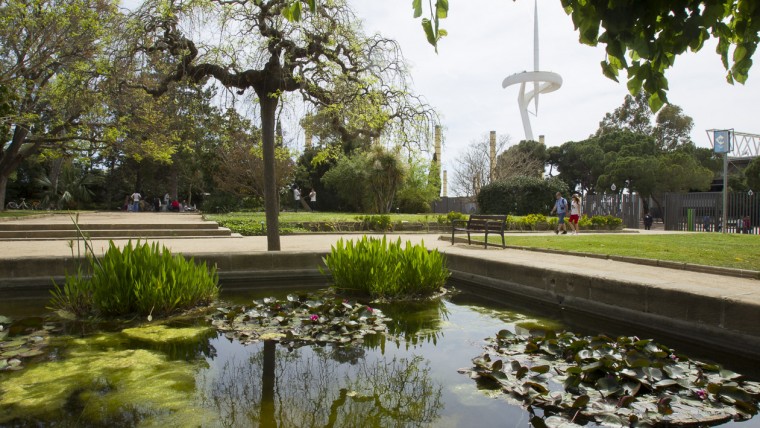El proper 10 de juliol estaran tancats amb motiu del concert de la Lola Indigo a l’Estadi Olímpic

The first attempts at plant acclimatisation began in the eastern Mediterranean, in places such as Egypt and Mesopotamia, since when it has helped us to enrich not just our knowledge of new species but the diversity of our local flora too.
The Acclimatisation Garden in Barcelona is arranged as flower beds, among which there are some especially notable large trees. They are sufficiently spaced apart to enable visitors to contemplate them individually. This makes sense when we bear in mind that the purpose behind these gardens was to discover the possibilities of cultivating plant species from around the world in Barcelona’s climate. Hence the need for space.

History
It was created by Nicolau M. Rubió i Tudurí in 1930, just after the Barcelona International Exposition of 1929, on land that had been occupied by the Italian and Swiss pavilions.
A large part of the first plantings consisted of specimens of species from the five continents that adorned the exposition grounds and which Rubió continued to add new specimens to until 1937.
Once the Second World War had ended in 1945, Lluís Riudor, the manager of Barcelona’s public green spaces, and Joan Panyella, the professional botanist and lecturer at the city’s School of Gardening, started planting again and this continued right up to the end of the 1980s. During this period specimens grown from Índex Seminum (Barcelona) seeds were also planted in the garden.

Art and Architecture
It was officially opened in 2003 and designed by the professional gardener, Lluís Abad. The memorial was a proposal received by the Barcelona Municipal Institute of Parks and Gardens from the NGO Associació Projecte dels Noms, which had been set up in 1993 to raise public awareness of AIDS. It is an olive tree, the symbol of peace and eternity, which stands in a flower bed with elongated paving stones inside, on which a poem by Miquel Martí i Pol has been engraved.
-
- Phone number
- Tel.: 010
-
- Accessibility
- Accessible for people with physical disabilities
-
- Titularity
- Public center
- Address:
- Av Estadi, 42*48
- Districte:
- Sants-Montjuïc
- Neighborhood:
- el Poble-sec
- City:
- Barcelona
Timetable
| Periode | Dies | Hores |
|---|---|---|
Horari d'hivern de l'1 de novembre al 31 de març |
Cada dia excepte 10 juliol | de 08.00 h a 19.00 h |
Horari d'estiu de l'1 d'abril al 31 d'octubre |
de 08.00 h a 21.00 h |
aproximada, en funció de
l'horari solar (tanquen
quan es fa fosc, al capvespre)
Està situat entre l'Estadi Olímpic i les Piscines Picornell.- Accessos: Av de l'Estadi junt a l'Estadi Olímpic.
Abans denominat Jardí d'Aclimatació de Barcelona

